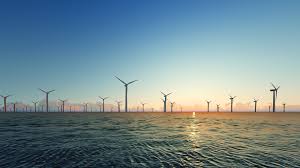In line with India’s commitment at the COP26 summit in Glasgow last year, the country aims to reach net-zero by 2070.
Furthermore, India seeks to meet 50% of its energy needs by 2030 through renewable sources and expand non-fossil fuel power generation capacity to 500 GW in this decade.
In light of these targets, the Government of India (GoI) has approved a multibillion dollar plan of setting up transmission projects for power supply from these renewable energy projects.
Setting up ‘green energy corridors’
India is setting up “green energy corridors” in two phases.
“The Green Energy Corridor Project aims at synchronizing electricity produced from renewable sources, such as solar and wind, with conventional power stations in the grid,” India’s Ministry of New and Renewable Energy says on its website.
One phase will supply 20 gigawatt (GW) of renewable energy to the national grid, the Hindustan Times reported.
Furthermore, the country is in the process of building 63 GW of renewable energy capacity, according to the report. Installed non-fossil fuel power capacity is expected to increase by 66% by 2030.
According to ratings agency ICRA, India’s renewable energy generation capacity will increase by 16 GW in fiscal year 2023.
India aims to cut projected emissions of carbon will by 1 billion tons by 2030.
Also, investments in green energy are steadily going up. From 2014-15 to June 2021, green energy projects in India received foreign direct investments worth U.S. $7.27 billion, the Hindustan Times reported. Of this amount, U.S. $797.21 million came in during 2020-21.
The government is also aiming to ensure the national grid doesn’t get threatened by the huge surge in electricity from sources such as solar and wind. Through the maintenance of the aforementioned corridors, the grid frequency remains within the 49.90-50.05 Hz (hertz) range. Also, the country recently commissioned an Automatic Generation Control (AGC), which sends signals to power plants every four seconds to maintain frequency and makes for a more reliable power grid, according to the report.
Powering up
Transmission systems will be created over a five-year period from Fiscal Year 2021-22 to Fiscal Year 2025-26. According to the statement, the Central Financial Assistance (CFA) will offset the Intra-State transmission charges and keep power costs low.
Another phase of the project is expected to help supply around 24 GW of renewable energy by 2022.
India has installed 157.32 GW of non-fossil based energy capacity. That accounts for 40.1% of total installed electricity capacity, the report stated.

 Iran Energy News Oil, Gas, Petrochemical and Energy Field Specialized Channel
Iran Energy News Oil, Gas, Petrochemical and Energy Field Specialized Channel



